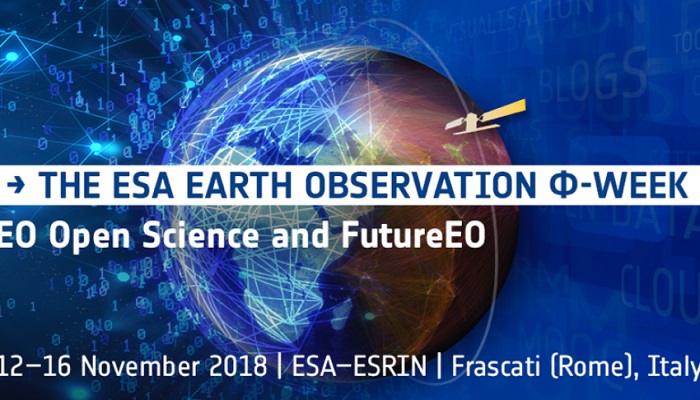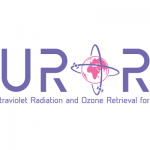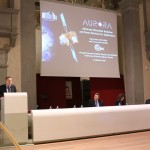
AURORA at the ESA Φ-weeK event
The European Space Agency (ESA) is organising a Φ-week event focusing on EO Open Science and FutureEO. It will be hosted in ESA-ESRIN from 12-16 November 2018.
The event will review the latest developments in Open Science trends and kick-start innovative activities of the recently created Φ-department looking at FutureEO, and its associated Φ-lab aiming to identify, support and scale bold EO ideas.
The AURORA Consortium is planning to contribute actively to the workshop with two presentations in the Digital Poster Session about results from the study of a new INSPIRE data specification for Ozone and UV satellite data and on the main features of Complete Data Fusion algorithm.
Investigation of a new INSPIRE Data Specification for Ozone and UV satellite data (by Argyros Argyridis, EPSILON)
Earth’s atmospheric composition plays a key role for Earth life and activities. Atmospheric data are important for weather and climatic applications. Specifically, data related to ozone concentrations and UV radiation have multiple applications in health and economy. The AURORA project aims to provide world-wide Ozone concentration and UV radiation data from the synergetic use of Sentinel 4 and 5 data for applications. It is desirable however that these data will be provided in a comprehensive and robust manner that ensures data interoperability and ease of use. INSPIRE data specifications and technical guidelines define a concrete set of instructions to provide an effective way of combining spatial data and services from different sources across the EU. Currently INSPIRE covers 34 spatial data themes, mainly focused on vector data, while very few raster datasets are already defined. In this presentation an overview of the state-of-the-art on satellite-derived atmospheric data will be presented. The observation made will be considered along with the current practices within INSPIRE on raster data to establish some initial requirements on how AURORA datasets can be shared within the framework of INSPIRE.
The Complete Data Fusion for the improvement of Sentinel 4 and Sentinel 5 products (by Nicola Zoppetti, IFAC-CNR)
This work highlights the importance of the data fusion procedure in the management of large data volumes, such as those provided by the atmospheric Sentinels. The work is divided into two parts. The first part, which consider the fusion of 1000 coincident pixels simulated with different errors, aims to show that the CDF is able to combine correctly information from several coincident measurements into a single product, taking into account the a priori information. The same a priori information introduces a bias if, for example, the arithmetic averages of the input profiles are considered. In the second part of the work, the products obtained by fusing not perfectly co-located simulated ozone profiles in TIR and UV bands are analysed. In particular, the characteristics of these products are compared with those of the original products that have been fused and that have been simulated in the context of the AURORA project. This comparison is designed to at highlight the better data exploitation provided by the fusion. The second part also shows that the CDF can be applied with different coincidence grid cell sizes, for example to match the size of an assimilation grid, leading to different compression factors of the original Level 2 data volume.




